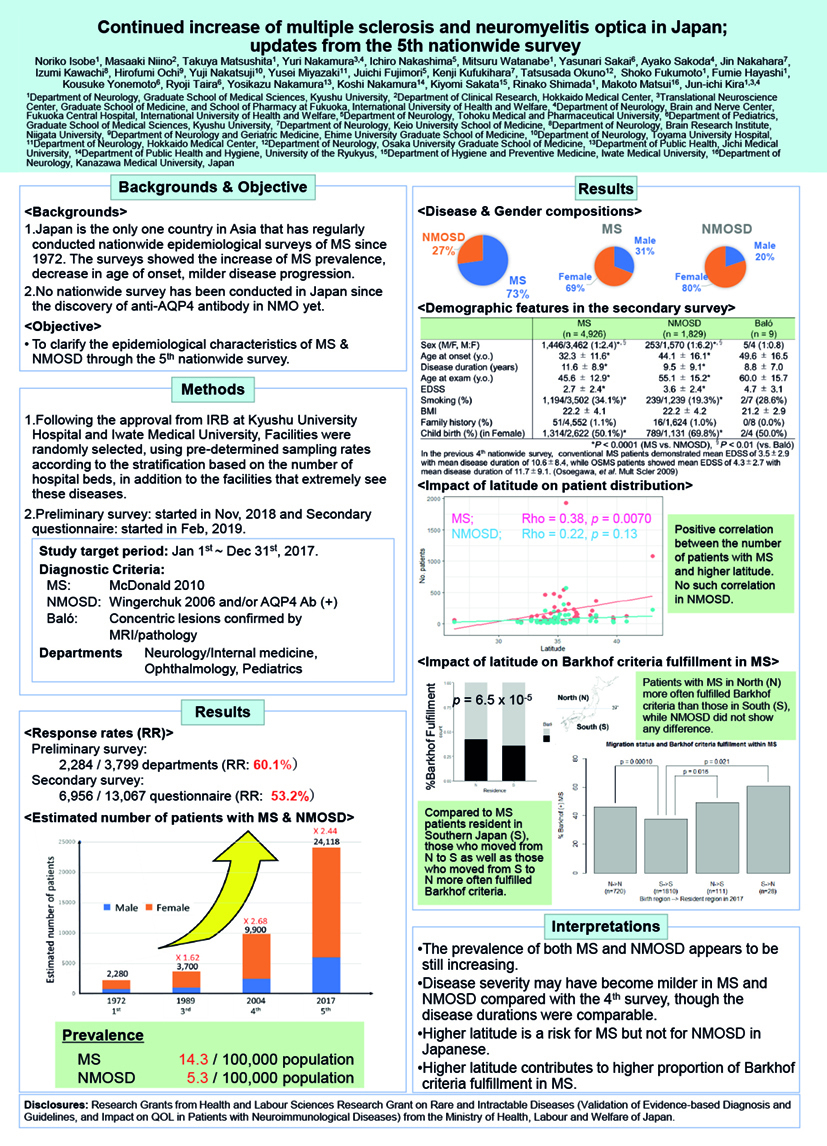Continued increase of multiple sclerosis and neuromyelitis optica in Japan
Abstract
Backgrounds:
In Japan, nationwide survey for multiple sclerosis (MS) has regularly been conducted since 1972, and the past 4 surveys conducted before the discovery of anti-aquaporin 4 antibodies.
Objective:
To investigate the epidemiological characteristics of MS and neuromyelitis optica spectrum disorders (NMOSD) in Japan through the 5th nationwide survey.
Methods:
Preliminary survey was conducted to ascertain the approximate number of patients with either MS or NMOSD who had seen at the selected facilities during 2017. Preliminary survey packages were sent to departments of neurology, internal medicine, ophthalmology, and pediatrics, at the facilities randomly selected using pre-determined sampling rates according to the stratification based on the number of hospital beds, as well as those specifically focused on these diseases. Secondary questionnaire was sent to the facilities which replied that they saw those patients in 2017 to collect the detailed clinical information of each patient.
Results:
Response rates were 60.1% (2,284/3,799 departments) for preliminary survey and 53.5% (6,990/13,067 individual questionnaire forms) for secondary survey. Estimated number of MS and NMOSD patients were 24,118, which is more than 10-fold higher than that (2,280) of the 1st survey in 1972. The crude prevalence for MS and NMOSD was 19.6/100,000 (14.3 for MS and 5.3 for NMOSD). Male: female ratio was 1: 2.2 in MS and 1: 4.4 in NMOSD. The onset age (mean ± standard deviation, year) was 32.3±11.6 in MS and 44.2±16.1 in NMOSD. Proportion of ever-smokers were higher in MS compared to NMOSD (34.1% vs. 19.3%, p = 2.5 x 10-22). Disease-modifying therapy had been used for 75.4% in MS.
Conclusions:
Compared to the previous survey, the prevalence of MS and NMOSD appears to be still increasing. Smoking could be a risk factor in Japanese MS as same as in other populations.

